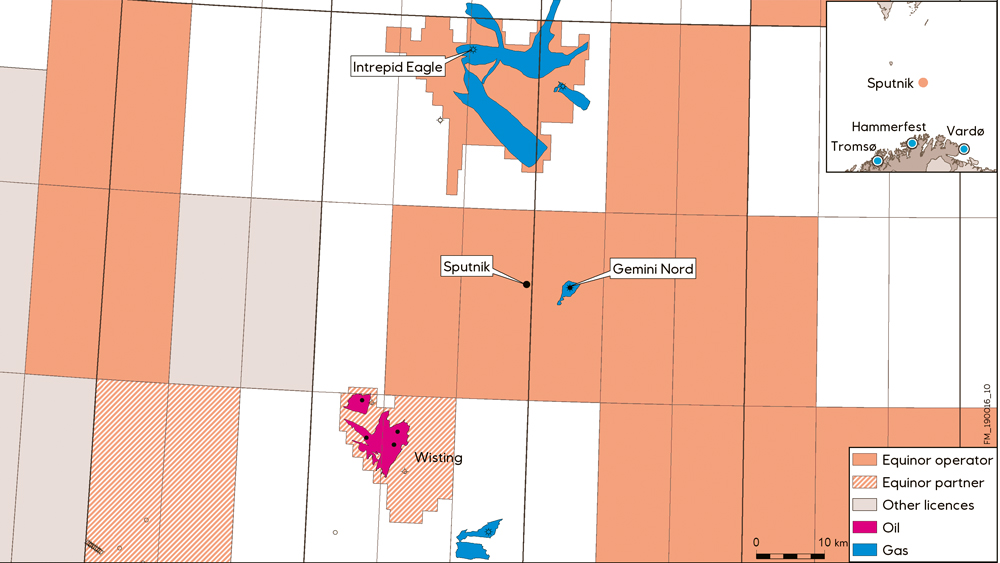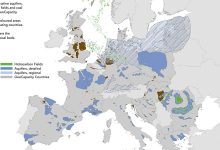New Light Oil Discovery in the Barents Sea
Equinor and partners OMV and Petoro have made an oil discovery in the Sputnik exploration well in the Barents Sea. Recoverable resources are preliminarily estimated at 20-65 million barrels of oil.
The Sputnik well was drilled in licence PL855, approximately 30 kilometres North East of the Wisting discovery. The well encountered a 15-metre oil column in a Triassic sandstone reservoir. Fluid samples contain light oil and water.
“We are encouraged by this result as it confirms the presence of oil north of the Wisting discovery, where Equinor has acquired a strong acreage position,” says Nick Ashton, Equinor’s senior vice president for exploration in Norway and the UK.
“The geology in the Barents Sea is complex, and more work lies ahead to determine commerciality. But this discovery shows that persistence and our ability to learn from previous well results does pay off,” adds Nick Ashton.
In 2017, Equinor’s Gemini Nord well resulted in a very small, uncommercial oil discovery in a reservoir channel system within the PL855 licence. In 2018, a larger channel complex was targeted in the neighbouring PL615 licence, with the Intrepid Eagle well. This well proved a 200-metre gas column, but no oil. The Sputnik well, which is the second well in PL855, has proven oil in a large channel system.
“Detailed fluid analysis combined with geological and geophysical mapping will be carried out to fully understand the commercial potential of the Sputnik discovery. If confirmed that the structure comprises volumes that can be recovered in a commercially viable way, the partnership will assess possible development solutions,” Nick Ashton says.
The Sputnik well (7324/6-1) was drilled to a vertical depth of 1569 metres below the seabed by semi-submersible drilling rig West Hercules, which has now moved on to drill the Equinor operated Lanterna well in PL796 in the Norwegian Sea.
Equinor is operator and holds 55% of the PL855 licence. Partners are OMV (25%) and Petoro (20%).
Exploring the Barents Sea, in brief
In 2019, Equinor will explore four licences awarded by the Norwegian Ministry of Petroleum and Energy. The exploration wells will be drilled by the exploration rigs West Hercules and Transocean Enabler. The wells that are to be completed in 2019 have been named Gjøkåsen, Gjøkåsen Deep, Korpfjell Deep, Sputnik and Mist.
- Exploration drilling in the Barents Sea southeast follows from Norwegian authorities’ long-term high-level initiatives.
- The exploration drilling taking place in the Barents Sea in 2017-2019 will help clarify future opportunities in the Barents Sea and for the Norwegian continental shelf.
- “We have developed strong centres of expertise in Hammerfest and Harstad, with experts working on exploration, development and operation of the fields,” Equinor representatives mention.
- Each of the wells has the potential to supply significant resources in the Barents Sea, and may be candidates for new developments.
- Equinor was granted permission to conduct drilling from the Environment Directorate and the Petroleum Safety Authority Norway after thorough risk analyses and public consultation.
When drilling is complete, the wells are plugged and sealed with concrete (irrespective of whether a find is made) and the rig then leaves the area for operations elsewhere.







